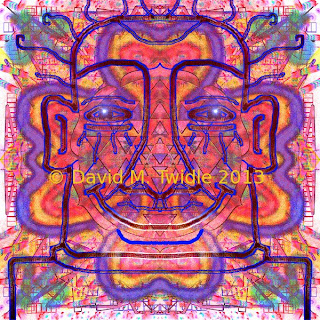I recently read an interesting essay regarding painting and its referencing (indexicality) to its author as its supposed link to authenticity. Based in pragmatics, the idea comes from Charles Sanders Pierce, the great logician who is famous for his trichotomy: icon, index and symbol. This also has connections to structuralist ideas of Signifier and Signified, something that has been dealt with in different ways by the post-structuralists who came after.
However, the idea that painting is a simple reference to the painter and that somehow is what legitimizes its presence is difficult for me to understand. The reason has to do with the philosophical concepts of multiplicity and virtuality. Henri Bergson expressed the effects of multiplicity and suggested intuition as a means for understanding creative works. As I have stated before, the multiple, discursive universe of the contemporary visual art field, marks perhaps many things, but one thing is for sure, it marks its movement towards perhaps greater unknowns in its creative flow. There is no conceptual ground on which to stand and beyond personalities and excessively rendered labels of identification, it appears meaningless. In fact, the only thing I can see is a baroque nature to all of this and that perhaps this is its aesthetic substantiation.
Therefore, this brings up the question regarding arts legitimacy. The problem lies in the fact that if there is no progressive logic to something, then its history is undetermined. However, I personally do not see this as a problem per se, but recognize its superficial dilemma. In fact, that might be a liberating actualization of the end production of years of institutional hegemony and conceptual schizophrenia.
Multiplicity and virtuality, which were examined so well by Gilles Deleuze, are aspects of anything and its relation to what made it. The problem with painting is that there is no direct reference in reality to its author and this is certainly true even in the personal effects left on its surface as a result of mark making or whatever in its production. The reason is that once a painting is completed, whatever has been left is a virtual representation in an objective form. The traces left also cannot necessarily be directly determined to belong to an individual, etc. A good example would be Tibetan Sand Painting, where the identity of an individual is actually avoided with intention. So many things are affecting the artist upon creation, that there is no consistent evidence to the contrary. Hence, in my opinion, this is the reason for the repetitive, complacent style making of so many artists today. The idea seems to be get a style and become recognized for it, because lets face it, it is about marketing and selling (standing out from the morass of ideas, personalities and images).
A painting is not much different than looking at an image on a computer. Its actuality does depend on an objective interaction, but its reality is there regardless...as it lives in a virtual realm. Increasingly, the flow of information is becoming self-referential and the author is becoming anonymous in time and space. All of this is a result of the virtuality of our existence in cyberspace and this is having a direct impact on the nature of painting and its relationship to culture at large. Perhaps there is a feedback loop between the techonology and its effects on the nature of visual art in general? These are complex issues and questions.






blog.jpg)






















.jpg)



.jpg)




.jpg)



